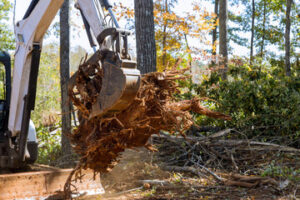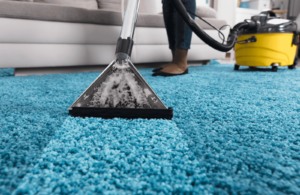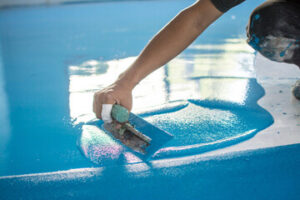Moving is a time-consuming and exhausting process. Whether you are moving across the country or just down the block, there is always something to do and plenty of physical strain. Click the Movers In Birmingham AL to learn more.
Movers offer a variety of services to make the move easier for you. Let’s take a look at some of the main ones:

A good packing schedule is essential for a smooth move. Most moving companies recommend starting early and working through each room in your home, packing non-essential items first and tackling more-used rooms last. This will help to make sure all areas are packed by the time movers arrive, and prevent items from being lost or damaged. Additionally, it will help ensure that all boxes are properly labeled.
Using the right materials is also important to protecting fragile items. High-quality packing tape is essential for keeping boxes closed and secured, and bubble wrap will help prevent breakage. Also, it is a good idea to invest in different-sized boxes to accommodate small and large items. Additionally, supplying movers with extra packing supplies is a good idea in case of any unexpected issues during the process.
Before your movers arrive, you should empty your refrigerator, freezer and any water-using appliances, such as washing machines or dryers. This will make the process easier and faster, as well as reduce the risk of water leakage during transit. Also, you should disconnect and drain any propane or gas-powered items, such as outdoor grills or lawn equipment.
It is also a good idea to set aside items that you will need immediately upon arrival at your new home, including toiletries and several changes of clothes. This will allow you to stay comfortable while waiting for movers to finish. Additionally, you should prepare a list of necessary supplies to give to the movers before they start work, such as cleaning products and a box of snacks.
When you are ready to pack, begin with rooms that are used less often, such as your guest bedroom and the attic or basement. Typically, these spaces contain non-essential items that you don’t need daily, such as books, decorative dishes and vases, and electronics. You should then move on to more-used areas, such as the living and dining rooms.
You should also consider assembling a high-value inventory before your movers arrive, which will enable you to track and manage the condition of your belongings during transit. You can create a log on paper or online that will detail the contents of each box, along with its location in your home. This will be helpful if something is misplaced or damaged during the transition, and it will save you from having to replace your possessions. Moreover, it will help you keep track of any expensive items that may require additional protection during the move. Professional movers can provide a variety of services, including custom crating for valuable items and climate-controlled storage facilities for fragile electronics or medical equipment. They are trained to handle delicate items with care, and will use dollies, furniture blankets, straps and other specialized equipment to protect your items from damage.
Loading
If you’re planning to move, the logistics can be daunting. It takes time and careful organization to make sure that your items are loaded properly. For this reason, it’s important to choose a reliable moving company that offers loading and unloading services. These companies can provide valuable support and assistance during the packing and moving process, saving you time and money. They can also help you navigate the challenges of a long-distance move.
During the loading process, your movers should begin by assembling the necessary materials. This should include furniture blankets, bubble wrap, packing tape, and strong boxes. In addition, a reliable service should provide additional supplies such as ramps and dollies for moving large items. This will save you time and ensure that your items are loaded safely and securely.
It’s essential that movers use proper lifting techniques when handling heavy and bulky items. This can prevent injuries to themselves and your belongings. In addition, movers should have experience maneuvering through tight spaces and hallways during the load.
The movers should also ensure that the items are loaded evenly throughout the truck. This will prevent shifting and damage during transit. For this reason, they should start with base items such as dressers and desks, and then stack smaller items on top of them. Finally, they should finish with larger furniture and appliances. They should also strap large items to the sides of the truck or container, to reduce movement during transportation.
In addition to their expertise in the moving process, a licensed mover is liable for any damage caused during the move. This can provide peace of mind and reduce the risk of costly repairs. It’s also beneficial to hire a licensed company that has adequate insurance coverage, which can cover the cost of repair or replacement items.
Licensed movers are able to accommodate a variety of budgets and schedules. They can offer a shared or full-load service, which helps you save money on transportation costs. In addition, they can also handle special needs such as climate control and storage.
Whether you’re planning to move across town or to a new city, a professional moving company can take the stress out of the process. Besides providing efficient and affordable services, they can also help you plan the best route for your move. They can even assist you with arranging a temporary storage unit, which can be a great option if you’re moving to a different location. In addition, they can offer you a free estimate of their services. This way, you can decide if they’re the right fit for your move. Also, they can advise you on how to protect your belongings from damage during the moving process. If you’re planning a long-distance move, they can help you choose the right shared or full-load service.
Transportation
The transportation industry is the backbone of modern society, connecting people to work, food, entertainment, and each other. It moves more than 81 trillion kilometers each year, trading $18 trillion worth of goods and allowing people to travel for business, pleasure, and necessity. It also has a significant impact on the climate, accounting for up to 23 percent of global greenhouse gas emissions.
The transport system is made up of the infrastructure, vehicles, and operations that enable the movement of people and goods. It includes air, land (rail and road), water, cable, and space modes of transport. The field of transportation is incredibly broad and complex, encompassing all aspects of the movement of materials and individuals.
Most of the world’s population lives within a few hundred miles of their place of employment, and most travel on a regular basis for work, school, recreation, or shopping. This requires a massive network of highways, streets, and rural roads, with vehicles like buses, trains, trucks, and cars. The transport of these vehicles consumes fuel, which in turn contributes to the production of greenhouse gases and other pollutants. It also requires extensive facilities for maintenance, loading, and unloading.
Modern consumers expect the products they buy to arrive promptly, requiring rapid shipping and delivery. Delays in delivery can lead to stockouts at retail locations and frustration for customers, and can cause manufacturers to hold excess inventory that ties up capital and incurs storage costs. This is one area where transportation shines, by ensuring that the right goods are in the right places at the right time.
The various means of transport are distinguished by their power source, whether they use fixed or variable routes, and whether they carry freight or passengers. Throughout history, the transport industry has developed from primitive to sophisticated. Early people walked or carried loads, later using sledges, pack animals, and draft horses pulling wheeled vehicles. Today, trucks and buses run on petroleum or natural gas, railways on coal, and ships on oil, steam, and electricity.
Choosing a reputable transportation service is vital for your move. Movers should be licensed and insured to operate commercial vehicles. In addition, they should have experience operating vehicles of different sizes and be familiar with the unique requirements of specific industries. They should also be able to provide additional services, such as custom crating for delicate items and climate-controlled storage facilities for valuables. Licensed movers also adhere to strict standards set by the Federal Motor Carrier Safety Administration. You can check the status of a moving company’s license by visiting the FMCSA website. Lastly, a good moving company will be able to offer competitive pricing.


